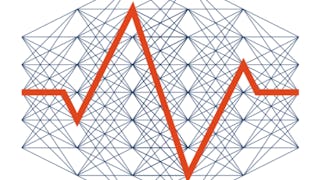This course will introduce the concepts of interpretability and explainability in machine learning applications. The learner will understand the difference between global, local, model-agnostic and model-specific explanations. State-of-the-art explainability methods such as Permutation Feature Importance (PFI), Local Interpretable Model-agnostic Explanations (LIME) and SHapley Additive exPlanation (SHAP) are explained and applied in time-series classification. Subsequently, model-specific explanations such as Class-Activation Mapping (CAM) and Gradient-Weighted CAM are explained and implemented. The learners will understand axiomatic attributions and why they are important. Finally, attention mechanisms are going to be incorporated after Recurrent Layers and the attention weights will be visualised to produce local explanations of the model.


您将学到什么
Program global explainability methods in time-series classification
Program local explainability methods for deep learning such as CAM and GRAD-CAM
Understand axiomatic attributions for deep learning networks
Incorporate attention in Recurrent Neural Networks and visualise the attention weights
您将获得的技能
要了解的详细信息

添加到您的领英档案
5 项作业
了解顶级公司的员工如何掌握热门技能

积累特定领域的专业知识
- 向行业专家学习新概念
- 获得对主题或工具的基础理解
- 通过实践项目培养工作相关技能
- 获得可共享的职业证书

该课程共有4个模块
Deep learning models are complex and it is difficult to understand their decisions. Explainability methods aim to shed light to the deep learning decisions and enhance trust, avoid mistakes and ensure ethical use of AI. Explanations can be categorised as global, local, model-agnostic and model-specific. Permutation feature importance is a global, model agnostic explainabillity method that provide information with relation to which input variables are more related to the output.
涵盖的内容
6个视频8篇阅读材料1个作业1个讨论话题5个非评分实验室
Local explainability methods provide explanations on how the model reach a specific decision. LIME approximates the model locally with a simpler, interpretable model. SHAP expands on this and it is also designed to address multi-collinearity of the input features. Both LIME and SHAP are local, model-agnostic explanations. On the other hand, CAM is a class-discriminative visualisation techniques, specifically designed to provide local explanations in deep neural networks.
涵盖的内容
5个视频7篇阅读材料1个作业1个讨论话题7个非评分实验室
GRAD-CAM is an extension of CAM, which aims to a broader application of the architecture in deep neural networks. Although, it is one of the most popular methods in explaining deep neural network decisions, it violates key axiomatic properties, such as sensitivity and completeness. Integrated gradients is an axiomatic attribution method that aims to cover this gap.
涵盖的内容
4个视频6篇阅读材料1个作业1个讨论话题7个非评分实验室
Attention in deep neural networks mimics human attention that allocates computational resources to a small range of sensory input in order to process specific information with limited processing power. In this week, we discuss how to incorporate attention in Recurrent Neural Networks and autoencoders. Furthermore, we visualise attention weights in order to provide a form of inherent explanation for the decision making process.
涵盖的内容
3个视频3篇阅读材料2个作业1个讨论话题4个非评分实验室
获得职业证书
将此证书添加到您的 LinkedIn 个人资料、简历或履历中。在社交媒体和绩效考核中分享。
位教师

从 Machine Learning 浏览更多内容
 状态:免费试用
状态:免费试用Duke University
 状态:免费试用
状态:免费试用University of Illinois Urbana-Champaign
 状态:免费试用
状态:免费试用University of Illinois Urbana-Champaign
 状态:免费试用
状态:免费试用University of Glasgow
人们为什么选择 Coursera 来帮助自己实现职业发展




常见问题
To access the course materials, assignments and to earn a Certificate, you will need to purchase the Certificate experience when you enroll in a course. You can try a Free Trial instead, or apply for Financial Aid. The course may offer 'Full Course, No Certificate' instead. This option lets you see all course materials, submit required assessments, and get a final grade. This also means that you will not be able to purchase a Certificate experience.
When you enroll in the course, you get access to all of the courses in the Specialization, and you earn a certificate when you complete the work. Your electronic Certificate will be added to your Accomplishments page - from there, you can print your Certificate or add it to your LinkedIn profile.
Yes. In select learning programs, you can apply for financial aid or a scholarship if you can’t afford the enrollment fee. If fin aid or scholarship is available for your learning program selection, you’ll find a link to apply on the description page.
更多问题
提供助学金,

 中
中

